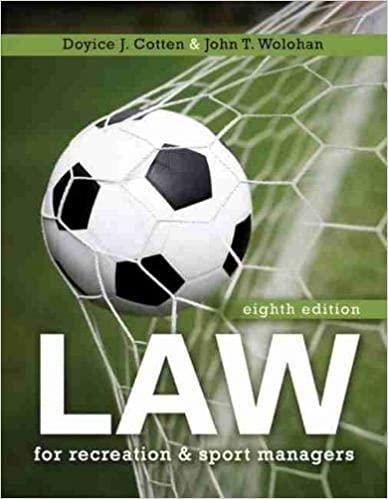1 50 PM Wed May 12 R. v. D. (P. ), 2008 Ont. C.J. 23 (CanLII) Exit Fullscreen X 1. This case highlights some Police were responding to a call about a fight in a parking lot. Constable Pyke of the differences and simi- attended the call in a marked cruiser. As he entered the parking lot he saw a larities between young vehicle leaving and also noticed a broken window in one of the mall buildings. He people and adults. Identify followed the car and stopped it because he thought that the occupants might have one special right given been involved in the reported incident, might have been witnesses, or might have to young people and one been injured. When Pyke approached the car and the window was rolled down he right given to everyone noted the smell of alcohol. He asked the driver for his documents and received, highlighted in this case. among other things, the driver's licence, which would have indicated that the 2. Why was it important that driver was a young person. This is important because after receiving the documents, the officer had stopped the the officer then asked the driver if he had been drinking. After receiving a positive vehicle in relation to the answer to his question the officer then made a demand for a roadside breath test. incident at the mall? The age of the driver is important because of the wording of s. 146 of the YCJA, which was quoted on the previous page. 3. Do you think it is reason- The Court noted that the defendant was under detention from the time that able that young people the car was pulled over. Also, it was important that the officer pulled the car over have to be notified of because of the incident at the mall, not for a traffic violation. The officer failed to their rights when they are make the young person aware of his rights under s. 146 of the YCJA. As the Judge detained? Why or why not? wrote, 4. Do you agree with the deci- Section 146 of the Youth Criminal Justice Act is not the same as section 10 sion in this case? Explain. (b) Charter right which can be "subject to such reasonable limits prescribed by law as can be demonstrably justified in a free and democratic society." In other words, if s. 146 is violated then the evidence must be excluded at trial-these rights cannot be overridden by other statutes. Based on this, the Judge excluded the response that the driver made about having had a few beers prior to being pulled over. Given the exclusion of this statement the Judge then had to con- sider if the subsequent actions of the officer (the demand for the roadside breath test) were to be allowed and thus the evidence gained admissible. The Judge found that the demand for a breath sample was made without "reasonable and probable grounds." As a result, the defendant's rights under ss. 8 and 9 of the Charter had been violated. Analysis under s. 24 of the Charter could not allow the evidence as admissible. The evidence was excluded and the defendant was found not guilty







